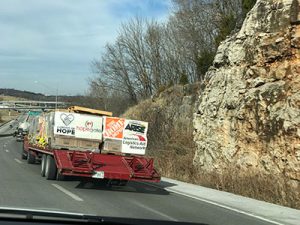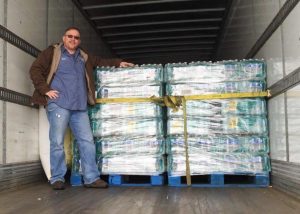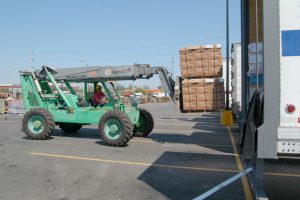A couple weeks ago, one of ALAN’s team members wrote a blog in which she publicly admitted that she’s the kind of person who makes Scooby Doo look brave, at least when it comes to things like watching scary movies.
I’m not huge horror movie fan myself (which is why you definitely won’t find me standing in line to catch the latest remake of the Exorcist).
However I do occasionally wish I could bottle up some of their wisdom, because thanks to their tried-and-true formula, many of these films and their famous clichés have lot to teach us about smarter disaster relief. . . .
The Ignored Warning
Whether it’s Halloween’s Dr. Loomis warning Sheriff Brackett about Michael Myers or the townspeople in the Blair Witch Project telling horrific stories about the titular witch, scary movies are full of people dispensing good advice that would go a long way toward keeping the main characters safe – if only they’d listen.
Those of us who work in disaster relief and emergency management feel these messengers’ pain, because despite using multiple methods to encourage people to evacuate, get to an interior room, move a few miles inland or avoid going out in a storm, there are still many people who decide to let that potentially life-saving advice go unheeded. In the process, they often wind up putting themselves and rescuers in harm’s way.
For the sake of all of us, please don’t be one of those careless characters. We really do want you to be around long beyond the next disaster.
The False Jump Scare Followed By A Real Scare
Most of us who have been to a horror movie have experienced at least one of these scary movie staples. It’s that ominous moment when something that promises to be terrifying makes a sudden appearance only to wind up being nothing. (Think of Ripley seeing the cat in Alien or Officer Dewey’s porch appearance in Scream). And then, just as our heartbeats and adrenalin levels have returned to normal. . . . bam! The real zombie/poltergeist/chainsaw killer appears and starts wreaking havoc.
A similar phenomenon happens with certain kinds of disasters – especially hurricanes. While many of these tropical weather phenomena are strong enough to earn names and make national news, some of them thankfully wind up diminishing in strength or heading out to sea. But that doesn’t mean that the coastal communities who were in the cone of concern are in the clear because there’s always the possibility that another major storm WILL wind up hitting and creating significant damage exactly as predicted.
In light of this, don’t let your guard down just because this year’s Atlantic hurricane season is almost over. After all, the coast is never really clear until the final credits roll.
The Unfortunate Character Who Separates From The Group
Every student of horror movies knows that independence and happy outcomes typically don’t go hand-in-hand. In fact, it’s usually the person (like many of the characters in Friday the 13th) who decides to peel off from the pack who winds up meeting one of the grisliest fates, while members who stay with the group tend to fare better – unless of course they can’t find the car keys.
Keep this lesson in mind next time your company wants to start a standalone product collection drive or send a big truckload of unrequested supplies to an affected area after a disaster. While such efforts won’t get you attacked by Godzilla or Freddy Krueger, they could wind up creating some wicked inefficiencies – and lots of unnecessary waste. Instead, do your best to align yourself with the one of the many non-profits or relief and rescue organizations that specialize in dealing with major disasters every day. They’ll know the best way to guide you through the chaos – and to put your good intentions to the best possible use.
Going Into The Woods
What is it about horror movie characters that compels them to run directly to some of the most perilous places – be it the woods, the garage or that creepy basement – instead of hot-footing it in the opposite direction? Haven’t they usually been expressly told not to go there? Moreover, haven’t they watched any Geico commercials lately?
It’s a similar story with people who self-deploy to disaster sites. No matter how often they’re asked to stay away, many folks still insist on traveling directly to ground zero. And that’s a shame, because when they do, they often wind up endangering themselves or getting in the way of organized rescue and relief efforts.
If you truly want to help, there are much safer ways to make a difference, including making a financial donation to the non-profit of your choice – or filling one of ALAN’s donated supply chain requests.
The Sequel
One final but important point: Even when a horror movie is over, it’s never truly over, because if it’s a success there will usually be multiple sequels. (There’s a reason Jamie Lee Curtis is known as the Scream Queen, people!).
I wish I could say that the disaster space doesn’t have a parallel. However it clearly does, because some types of disasters seem to strike with horrifying regularity, with nightmarish consequences that it can take communities years to get over.
Thankfully, humanitarian organizations’ efforts also have a parallel, because with the help of loyal supporters like you, we’re able to provide the antidotes year-after-year: a warm meal, temporary shelter, a much-needed bottle of water, cleaning supplies, health and hygiene materials – and all of the donated supply chain services required to get them shipped and distributed.
On behalf of all of us at ALAN – and the many other non-profits who work in disaster relief – thank you for helping us be a light in the darkness. I’m still freaked out by horror movies. But the world is a much less scary place because of good folks like you.
Kathy Fulton
Executive Director
American Logistics Aid Network





